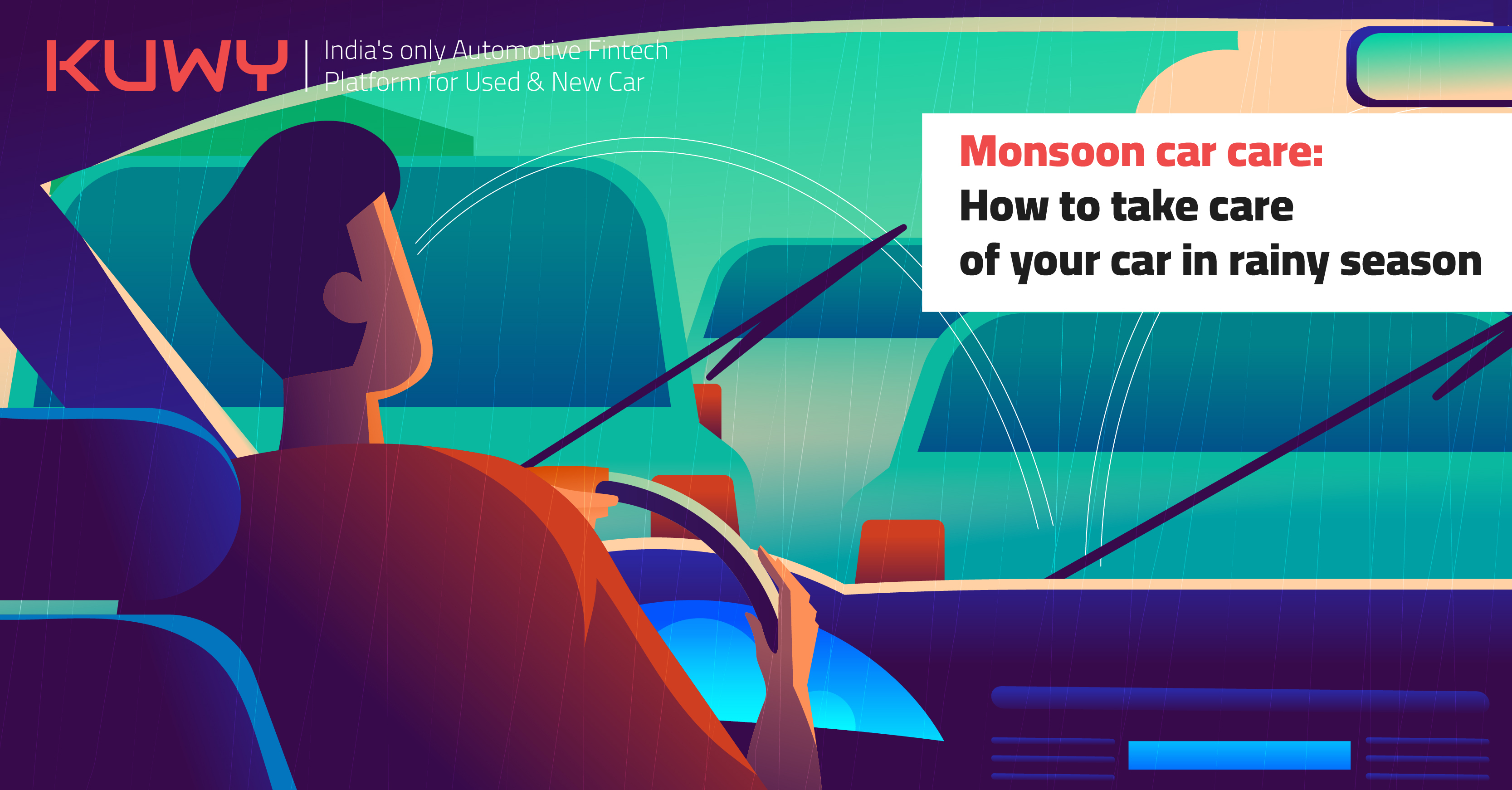Monsoon season has begun. And all the mud, floods, and never-ending gridlock that we have grown accustomed to. The monsoon is also the worst time of year to drive a car since all the smallest crevices and gaps start to fill with mud, debris, and water, which can cause rust.
Here are some suggestions for keeping your automobile in good condition in the rain as well as some driving safety advice and pointers for keeping your car safe from any damage. Consider these suggestions before the sky starts singing and you find yourself stuck in the middle of a flooded road instead of dancing.
- Check the brakes before starting
You should pull the automobile out of the water as quickly as you can because damp brakes are less effective. You can gradually speed while applying the brakes if your brakes have become wet in order to dry them off. If the issue continues, you should have a professional fix it right away.
- Examine the tyre threads
Always keep your tyres in good condition, but the rainy season necessitates additional care. If your tyres are damaged, traveling on wet roads might be dangerous. When the road is wet and slick, the tyres ability to grip the surface is reduced. You risk losing control if you have bad tyres.
Always double ensure that your spare tyre has enough air in it every weekend. If you do get a puncture, head to the nearest tyre shop to have it patched or use a tyre repair kit to do it yourself.
The majority of accidents that happen during the monsoon are caused by an automobile aquaplaning or skidding. Since you will lose grip on the road and your brakes will be affected, it is crucial to ensure that the tyre tread depth is greater than 2mm. The best technique to inspect the treads on your car's tyres is to insert a coin and see if half of it is in the treads. Ensure that the tyre pressure is also at the right level.
- Check Interiors
The windshield and window panes don't fog up thanks to the air conditioning. Make sure the AC is functioning properly. If the interiors start to mist, turn on the air conditioner and put it in fresh-air mode. The airflow should be directed to the windshield using the HVAC control. The front windshield and windows will be easier to de-mist as a result. It is recommended to turn on the rear defogger if the vehicle has one. Use old newspapers to clean the interior of the front and rear windshields as well. Constant dampness can leave smudges on the glass, which can be annoying and reduce visibility at night by causing incoming automobile light to refract.
Never forget to have your air conditioner serviced right before the rain starts. The AC filter must be in excellent condition because it will be working extra hard to limit the amount of moisture and wet filth that enters your automobile.
If your automobile lacks an automatic front defogger, position the vent to the front defogger position while turning the blower speed to full and switching the intake to fresh air mode. Your windscreen will quickly become de-fogged. Never use a cloth to wipe away the moisture as this could create streaks. Most automobiles also have a rear defogger, which comes in handy during monsoon season.
- Inspect Batteries and wires
The battery suffers greatly from the excessive use of wipers and lights during the monsoon season. Maintain a fully charged and healthy car battery.
The wiring and fuse components should all be properly insulated because the car's bonnet comes into direct contact with the rain. Your automobile might not start in the middle of a traffic jam due to a weak battery's impact on the ignition system.
Your car's wiring is also impacted by too much moisture, and exposed wire can short out. As short circuits caused by moisture or contact with water render the car's warranty void, checking your wiring aids in maintaining the integrity of your warranty.
- Protect the car
Use a decent wax finish to shield the car's body from the elements. This will safeguard the paint and enhance water molecule beading. Grease the car's gear linkage, propeller shaft, door locks, and other sub-frame parts. Get an anti-rust treatment done to stop the exposed underbody from rusting. Replace the doors' rubber seals if they become loose to stop water from seeping inside. Before the monsoon arrives, fill in all the scratches as well; otherwise, the rainwater may serve as a crevice and soak through, causing the body to rust.
- Check Wipers
During the rainy season, small parts like wipers also become highly crucial. Insufficient vision due to worn-out wipers may result in fatal accidents. So check to see if your wipers are current. Furthermore, if your wiper blades are more than two years old, you might want to consider replacing them.
Conclusion:
Monsoon gives us delight until we take care of ourselves and our vehicle. As you take care of your vehicle, Kuwy takes ultimate responsibility in delivering quality services to its customers. Feel free to approach Kuwy to select your dream car, kuwy assist you with hassle free loan process. Download the application now!




